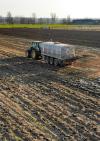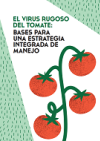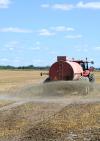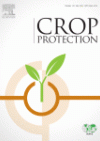Media library
Documentary, graphic and/or audiovisual knowledge objects are offered here, offering information on various sectors and topics. Use the keyword search or search filters to access current audiovisual and documentary knowledge objects useful for your implementation.
If you have any questions or suggestions, please contact us here.

Phytosanitary strategies in tomato
Strategies for the use of phytosanitary products in tomte cultivation

Tomato rugose virus: bases for an integrated management strategy
Document with information on epidemiological aspects—such as plant infection, virus spread, alternative hosts, virus persistence in the environment, etc.—that are essential for understanding and framing.

Pyricularia oryzae control strategies in the Calasparra rice plantation. Results obtained from the GO ArrozINNOVA project.
Results obtained in the GO ArrozINNOVA Project

Meetings of the Working Group on Experimentation in Viticulture and Oenology
Compilation of research on Viticulture and Oenology from the Working Group

Protection of grapevine pruning wounds against Phaeomoniella chlamydospora and Diplodia seriata using commercial biological and chemical methods
Article about Botryosphaeria dieback and esca, two of the most damaging grapevine trunk diseases (VTB) affecting vineyards in major grape-producing areas around the world.

Digital droplet PCR technology for the detection of Ilyonectria liriodendri in environmental samples of grapevines
Article about the accurate, early, and specific detection and quantification of blackleg fungi and the evaluation of droplet digital PCR and real-time PCR techniques.
Report A3: Map of stakeholders for climate change adaptation in the vineyard and wine sector
The overall objective of the VIN & ADAPT II project was to promote knowledge transfer and mobilize all stakeholders to drive adaptation to the challenges posed by climate change in the wine sector.
Effects and adaptation of the vineyard to climate change
Climate change is the other major uncertainty for the wine sector. Currently available climate projections indicate that if greenhouse gas emissions continue at their current rate, there could be rising temperatures and decreased rainfall in the Iberian Peninsula, along with an increase in extreme weather events such as droughts and heat waves.
Phytopathological Records
To provide information on the biology and control of pests, diseases, weeds, physiopathies, and auxiliaries of interest to plants in Extremadura.
Active ingredients allowed in integrated production for pome fruit trees and restrictions on use
Information on active ingredients in integrated production for pome fruit trees and restrictions on use
Active ingredients allowed in integrated production for stone fruit trees and restrictions on use
Information on active ingredients in integrated production for stone fruit trees and restrictions on use
Plant pest and disease alerts: detection of Trioza erytreae, the African citrus psyllid, in the central-eastern coastal area of Asturias
Quarantine pest of special importance in citrus fruits that produces very striking wart-like deformations.
Plant pest and disease advisories, beware of the possible introduction or presence of Tomato Rugose Fruit Virus (ToBRFV)
Organism under community emergency measures that causes symptoms on leaves and damage to tomato fruits
Plant pest and disease alerts: Presence of a large number of individuals of Mythimna unipuncta, a grass defoliating caterpillar.
A very voracious and polyphagous defoliating caterpillar that can affect both forage and horticultural crops, with prairies and grasslands, along with corn, being the most affected.
Golden flavescence of grapevine and its vector Scaphoideus titanus Ball
Golden flavescence, in English “flavescence dorée of grapevine”, is a very serious and destructive disease that affects the vine. It is a disease of bacterial origin, being produced by the phytoplasma Candidatus Phytoplasma vitis, which needs to be transmitted by an almost specific vector called the vine cicada (Scaphoideus titanus Ball)
Plant Pest and Disease Advisories: Guatemalan Potato Moth Tecia solanivora
Tecia solanivora is considered a quarantine organism due to the potential phytosanitary risk it represents, constituting a serious threat to potato production by affecting and rendering tubers worthless, either during cultivation or in storage.




